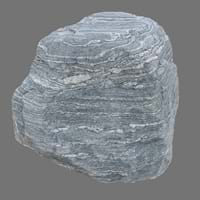Formation of Migmatite
Formation
0
Formation
Migmatites form by high temperature regional and thermal metamorphism of protolith rocks where rocks melt partially due to high temperature. 0
Composition
0
Mineral Content
Biotite, Chlorite, Feldspar, Garnet, Graphite, Hornblade, Micas, Muscovite or Illite, Quartz, Quartzite, Silica, Zircon 0
Compound Content
Aluminium Oxide, NaCl, CaO, Carbon Dioxide, Iron(III) Oxide, FeO, Potassium Oxide, Magnesium Carbonate, MgO, MnO, Phosphorus Pentoxide, Silicon Dioxide, Titanium Dioxide 0
Transformation
0
Metamorphism
Yes 0
Types of Metamorphism
Burial Metamorphism, Cataclastic Metamorphism, Regional Metamorphism 0
Weathering
Yes 0
Types of Weathering
Biological Weathering, Chemical Weathering, Mechanical Weathering 0
Erosion
Yes 0
Types of Erosion
Chemical Erosion, Glacier Erosion, Water Erosion, Wind Erosion 0
Migmatite Formation
Migmatite formation took place millions of years ago. There are a variety of Migmatite Uses and the Migmatite Reserves are found in many countries around the world. The rocks in the earth’s crust continuously undergo changes in their composition which leads to formation of other rocks. Each rock has a unique formation process. Formation of Migmatite is explained below:
- Migmatites form by high temperature regional and thermal metamorphism of protolith rocks where rocks melt partially due to high temperature.
Along with Migmatite Formation, also learn about Migmatite composition and transformation in the next section.
|
||
|
||
|









